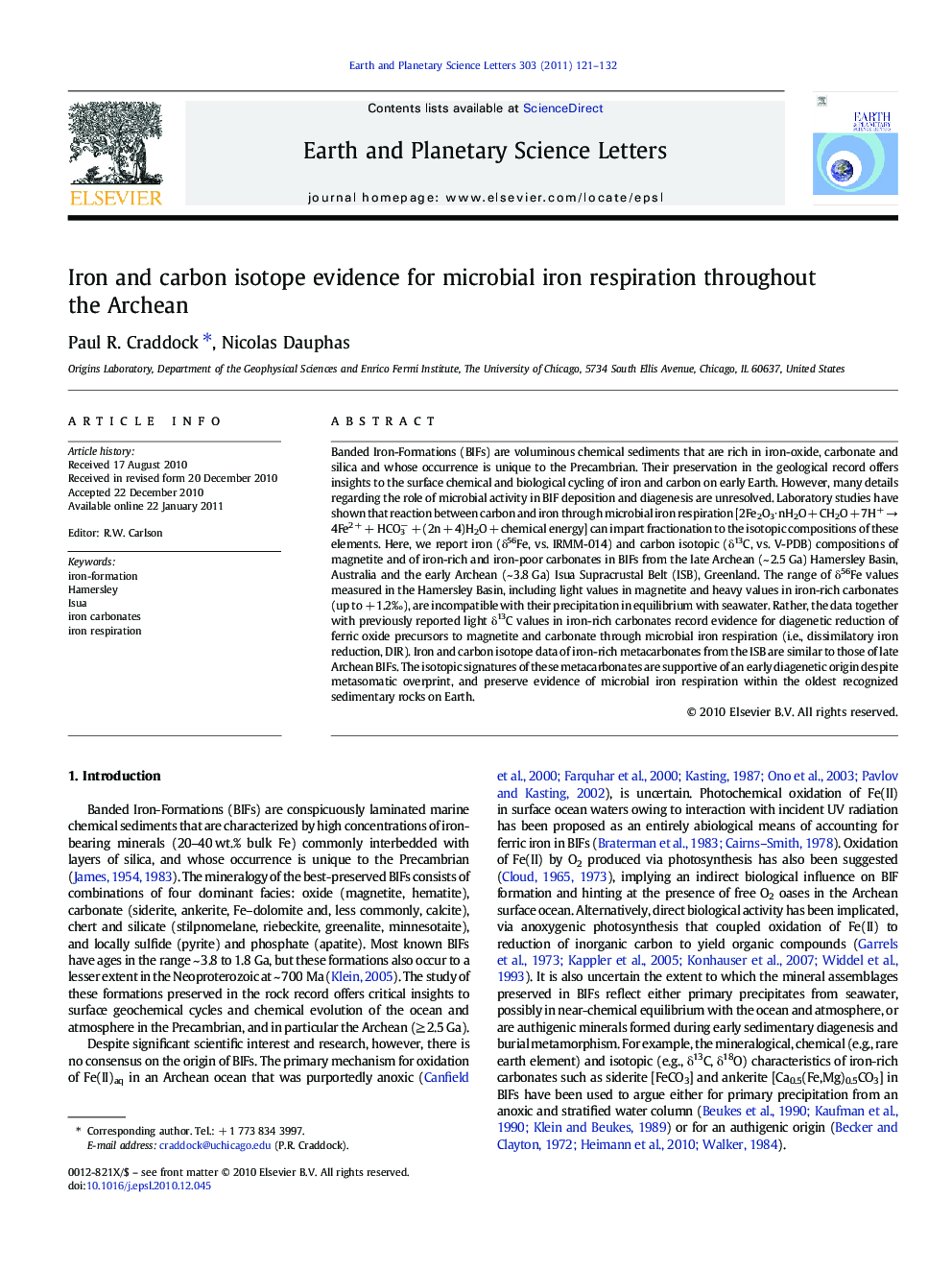| Article ID | Journal | Published Year | Pages | File Type |
|---|---|---|---|---|
| 4678084 | Earth and Planetary Science Letters | 2011 | 12 Pages |
Banded Iron-Formations (BIFs) are voluminous chemical sediments that are rich in iron-oxide, carbonate and silica and whose occurrence is unique to the Precambrian. Their preservation in the geological record offers insights to the surface chemical and biological cycling of iron and carbon on early Earth. However, many details regarding the role of microbial activity in BIF deposition and diagenesis are unresolved. Laboratory studies have shown that reaction between carbon and iron through microbial iron respiration [2Fe2O3∙ nH2O + CH2O + 7H+ → 4Fe2+ + HCO3− + (2n + 4)H2O + chemical energy] can impart fractionation to the isotopic compositions of these elements. Here, we report iron (δ56Fe, vs. IRMM-014) and carbon isotopic (δ13C, vs. V-PDB) compositions of magnetite and of iron-rich and iron-poor carbonates in BIFs from the late Archean (~ 2.5 Ga) Hamersley Basin, Australia and the early Archean (~ 3.8 Ga) Isua Supracrustal Belt (ISB), Greenland. The range of δ56Fe values measured in the Hamersley Basin, including light values in magnetite and heavy values in iron-rich carbonates (up to + 1.2‰), are incompatible with their precipitation in equilibrium with seawater. Rather, the data together with previously reported light δ13C values in iron-rich carbonates record evidence for diagenetic reduction of ferric oxide precursors to magnetite and carbonate through microbial iron respiration (i.e., dissimilatory iron reduction, DIR). Iron and carbon isotope data of iron-rich metacarbonates from the ISB are similar to those of late Archean BIFs. The isotopic signatures of these metacarbonates are supportive of an early diagenetic origin despite metasomatic overprint, and preserve evidence of microbial iron respiration within the oldest recognized sedimentary rocks on Earth.
Research Highlights► Isotopic study of BIFs from 2.5 Ga Hamersley Basin and 3.8 Ga Isua Supracrustal Belt. ► Iron oxides and carbonates in BIFs have a wide range of d56Fe and d13C ratios. ► Signatures support oxide and carbonate formation via microbial iron respiration. ► Evidence for early evolution (by 3.8 Ga) of microbial iron metabolisms on Earth.
